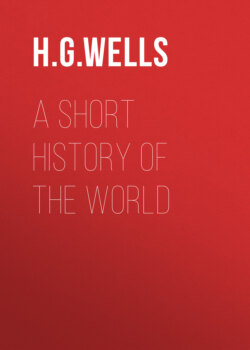Читать книгу A Short History of the World - H. G. Wells - Страница 26
На сайте Литреса книга снята с продажи.
THE AGE OF THE COAL SWAMPS
ОглавлениеTHE land during this Age of Fishes was apparently quite lifeless. Crags and uplands of barren rock lay under the sun and rain. There was no real soil—for as yet there were no earthworms which help to make a soil, and no plants to break up the rock particles into mould; there was no trace of moss or lichen. Life was still only in the sea.
Over this world of barren rock played great changes of climate. The causes of these changes of climate were very complex and they have still to be properly estimated. The changing shape of the earth’s orbit, the gradual shifting of the poles of rotation, changes in the shapes of the continents, probably even fluctuations in the warmth of the sun, now conspired to plunge great areas of the earth’s surface into long periods of cold and ice and now again for millions of years spread a warm or equable climate over this planet. There seem to have been phases of great internal activity in the world’s history, when in the course of a few million years accumulated upthrusts would break out in lines of volcanic eruption and upheaval and rearrange the mountain and continental outlines of the globe, increasing the depth of the sea and the height of the mountains and exaggerating the extremes of climate. And these would be followed by vast ages of comparative quiescence, when frost, rain and river would wear down the mountain heights and carry great masses of silt to fill and raise the sea bottoms and spread the seas, ever shallower and wider, over more and more of the land. There have been “high and deep” ages in the world’s history and “low and level” ages. The reader must dismiss from his mind any idea that the surface of the earth has been growing steadily cooler since its crust grew solid. After that much cooling had been achieved, the internal temperature ceased to affect surface conditions. There are traces of periods of superabundant ice and snow, of “Glacial Ages,” that is, even in the Azoic period.
It was only towards the close of the Age of Fishes, in a period of extensive shallow seas and lagoons, that life spread itself out in any effectual way from the waters on to the land. No doubt the earlier types of the forms that now begin to appear in great abundance had already been developing in a rare and obscure manner for many scores of millions of years. But now came their opportunity.
